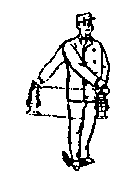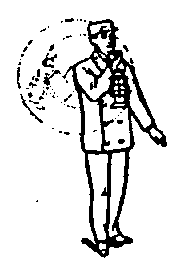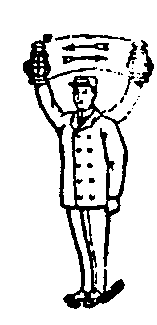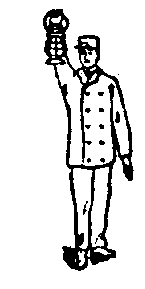Copyright 2000 T. Sheil & A. Sheil All Rights Reserved
Learn to use real railroad
Lantern, Hand and Color Signals
Railroads use lights and hand signs so that train men and workers can "talk."
The signs were first used over 130 years ago, before people had radios.
Railroads needed men to be able to send signals from far or near.
Many times, the signal man would be too far away to use a whistle or
horn. Colors, lights and hand signals were all used.
Color Signals
On the railroad, different colors have meaning. Flags are colored to
send a message. Flag color signals are:
Red - Stop
White - Go
Green - Go slowly - caution!
Blue - blue flags are placed on a car or other object on which men are working.
Lantern and Hand signals
The lantern and hand "talk" allows railroad men to signal each other, even
when far away or when noise is too loud for whistles or shouting. Our
pictures show a lantern, but men could also use flags or their arms.
Lanterns allowed train crews to see signals at night.

STOP! Swing lantern across tracks. |

SLOW DOWN! Hold at arms length when train is moving. |

GO! Raise straight up and down. |

GO BACK! Swing up and down in a circle at half an arm's length across
track, when the train is moving. |

TRAIN HAS PARTED! This tells the trainmen that cars have come loose.
Swing up and down in a circle at fill arm's length when the train is
running. |

DO NOT GO! APPLY BRAKES! Swing straight above your head when
train is standing. |

GO! RELEASE BRAKES! Hold at arms length above your head when
train is standing. |
|
Click here to go to the All Gauge Model Railroading Page
for trains, free paper kits, and Railroad Fun for all ages.






